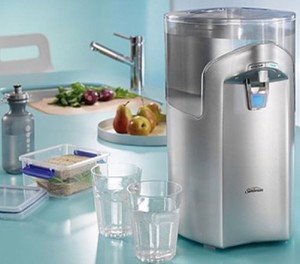As I promised, here I am again teaching you all you need to know about water purification.
III. Filters
Another method you could use for purifying water is by filtering it. Commercial filters are easy to find and come in all shapes and sizes. The variety of filters on the market will satisfy any budget. A filter will push the water through a tube of charcoal or of ceramic removing its impurities, and it will chemically treat it. The filtering is done through 2 hoses, one of them with a float that connects the unfiltered water recipient with the filter and the second one that connects the filter with the filtered water recipient. The most important thing to remember when using this method is to keep the hoses clean at all time, so they don’t contaminate the water.
The advantage of water filters is that water doesn’t taste weird afterwards. Basically, filters can remove any type of impurity, even dirt. However, it takes a bit of maintenance to do it, as the filters get clogged with the tannis that is removed. Eventually, they need to be replaced, so keep that in mind.
IV. Primitive Methods
If you are a survivalist and you are interested in methods that will go anywhere and that don’t require preparation, there are some solutions. One of them is using soil or better yet, sand to filter the water. If you repeat the process a few times, you will see the water becomes clear. You can also dig a hole close to the water source and use it to filter the water through it.
Keep in mind that although the water will be clear, the germs will still be there. Even spring water, which is usually considered safe, can be affected by different kinds of microorganisms.
Another primitive method is distillation, which helps you make the sea water or any salty water drinkable, by filtering the salt out. Dig water from the ground and put the water recipient in the middle. Place a transparent plastic sheet in the recipient. To stabilize the plastic, place a rock in the middle. Cover the hole with the plastic and put some dirt on it. The plastic sheet will create the effect of a greenhouse, determining the water in the ground to evaporate when it reaches a higher temperature. The water will eventually drip into the recipient.
If you want to make salty water drinkable, then you should place a pot/can inside of a bigger pot. The salty water will only drip into the bigger pot. Place a curved lid backwards on the two pots. When the water starts to boil, the fresh water will start flowing in drops into the small pot, without salt or minerals. A simpler method is to use a piece of cloth instead of the small pot; it will absorb the vapors.
Choose the method that suits you in the right situation; simple tricks can keep you in good health!



No comments yet... Be the first to leave a reply!